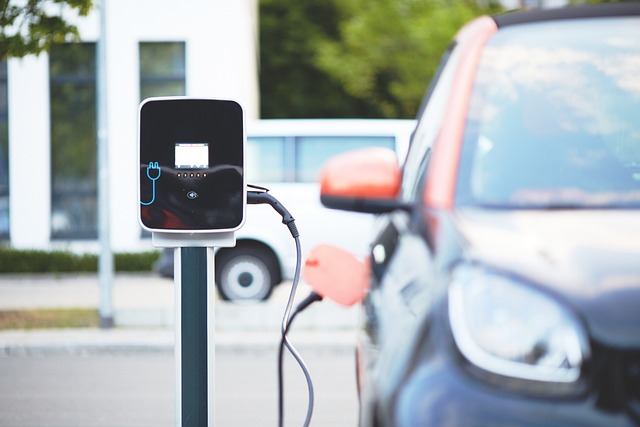The Future of Car Charging: A Comprehensive Guide to EV Chargers
Electric vehicles (EVs) are rapidly gaining popularity as more drivers seek environmentally friendly and cost-effective transportation options. As the demand for EVs grows, so does the need for efficient and accessible charging solutions. This comprehensive guide will explore the world of car chargers, focusing on home charging options, public charging infrastructure, and the latest technologies shaping the future of electric vehicle charging.

-
Level 2 Chargers: Operating on a 240-volt circuit, Level 2 chargers are significantly faster than Level 1 and are commonly used for home and public charging stations.
-
DC Fast Chargers: Also known as Level 3 chargers, these high-powered units can charge an EV battery to 80% capacity in as little as 30 minutes. They’re primarily found at public charging stations and along major highways.
How does home charging work for electric vehicles?
Home charging is one of the most convenient aspects of EV ownership. Most EV owners opt for a Level 2 charger, also known as a wallbox, for their home charging needs. Here’s how home charging typically works:
-
Installation: A certified electrician installs a dedicated 240-volt circuit and the wallbox charger in your garage or driveway.
-
Plugging in: When you return home, you simply plug your EV into the wallbox using the vehicle’s charging cable.
-
Charging: The wallbox communicates with your EV to determine the optimal charging rate and begins the charging process.
-
Monitoring: Many modern wallboxes come with smartphone apps that allow you to monitor charging progress and energy consumption.
Home charging offers the advantage of convenience and potentially lower electricity rates, especially if you charge during off-peak hours.
What factors should you consider when choosing an EV charger?
Selecting the right EV charger involves considering several factors:
-
Charging speed: Determine how quickly you need to charge your vehicle based on your daily driving habits and available charging time.
-
Compatibility: Ensure the charger is compatible with your specific EV model and its charging port type.
-
Installation requirements: Consider the electrical capacity of your home and any necessary upgrades to support the charger.
-
Smart features: Look for chargers with Wi-Fi connectivity, scheduling capabilities, and energy monitoring for added convenience and efficiency.
-
Weather resistance: If installing outdoors, choose a charger rated for outdoor use and extreme weather conditions.
-
Cost: Compare the upfront cost of the charger and installation with potential long-term savings on charging.
How is public charging infrastructure evolving?
The public charging infrastructure for electric vehicles is rapidly expanding to meet the growing demand. Here are some key developments:
-
Increased availability: More charging stations are being installed in public parking lots, shopping centers, and workplaces.
-
Fast-charging networks: Companies are building extensive networks of DC fast chargers along major highways to facilitate long-distance EV travel.
-
Integration with existing infrastructure: Some cities are retrofitting street lamps and parking meters with EV charging capabilities.
-
Wireless charging: Pilot projects are exploring the potential of wireless charging pads embedded in parking spaces or roadways.
-
Vehicle-to-grid technology: Some charging stations are being designed to allow EVs to feed electricity back into the grid during peak demand periods.
What are the latest innovations in EV charging technology?
The EV charging industry is constantly evolving, with new technologies emerging to improve charging speed, convenience, and efficiency. Some notable innovations include:
-
Ultra-fast charging: New chargers capable of delivering up to 350 kW of power are being developed, potentially reducing charging times to just a few minutes.
-
Battery swapping stations: Some companies are exploring automated battery swapping as an alternative to traditional charging.
-
Solar-powered charging stations: Integration of solar panels with charging stations to provide clean, renewable energy for EVs.
-
Dynamic wireless charging: Research is ongoing into embedding charging coils in roadways, allowing EVs to charge while driving.
-
Artificial intelligence: AI-powered charging systems that optimize charging schedules based on grid demand, energy prices, and user preferences.
| Product/Service | Provider | Key Features | Cost Estimation |
|---|---|---|---|
| JuiceBox 40 | Enel X | Wi-Fi enabled, 40A output, ENERGY STAR certified | $600 - $700 |
| ChargePoint Home Flex | ChargePoint | Adjustable amperage (16-50A), Alexa integration | $700 - $800 |
| Tesla Wall Connector | Tesla | Sleek design, up to 44 miles of range per hour | $400 - $500 |
| Grizzl-E Classic | United Chargers | Rugged design, 40A output, low cost | $400 - $500 |
| Electrify America Home Charger | Electrify America | Flexible indoor/outdoor installation, 40A output | $600 - $700 |
Prices, rates, or cost estimates mentioned in this article are based on the latest available information but may change over time. Independent research is advised before making financial decisions.
The future of car charging is bright, with continuous advancements in technology and infrastructure making electric vehicle ownership more accessible and convenient. As charging speeds increase, costs decrease, and availability improves, the transition to electric vehicles is becoming increasingly attractive for drivers worldwide. Whether charging at home or on the go, EV owners can look forward to a future where keeping their vehicles powered is as simple and ubiquitous as refueling is today.





